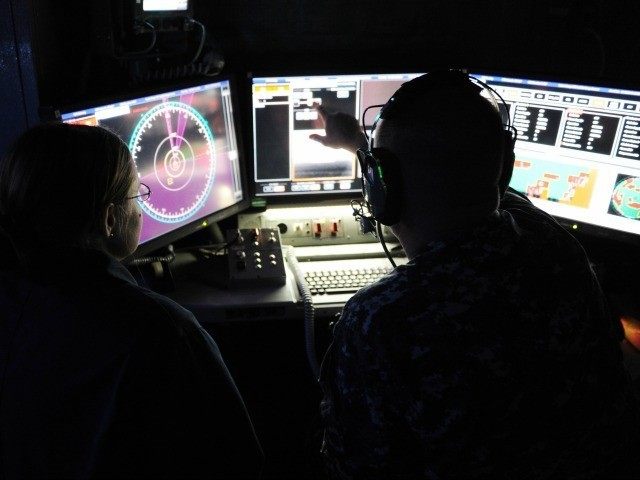With American naval dominance facing its first major challenge in almost 70 years as China strives to become the world’s leader in offensive drone technology, the United States has tested and deployed the world’s first operational laser weapon.
With a cost of about $1 per directed energy beam shot versus $400,000 for the current SM-2 anti-drone missile, America is assured of naval domination over China’s strategy to project swarms of low-cost strike drones to attack U.S. warships.
The U.S. Central Command secretly deployed a 30 kilowatt Laser Weapon System (LaWS) on board the USS Ponce patrolling in the Persian Gulf this summer to determine the effectiveness of directed energy weapons in an operational environment. Tests were so successful that Naval Sea Systems Command gave the Captain of the Ponce the authority to deploy the weapon against any inbound unmanned aerial vehicles (drones), slow-moving helicopters or the fast patrol craft operated by Iran.
The 10 U.S. Carrier Strike Groups (CSGs) and 10 Amphibious Ready Groups (ARGs) are the keys to U.S. dominance of the world’s oceans. A CSG centers on an aircraft carrier projecting a Carrier Air Wing for offensive strike capability. An ARG is centered on a small aircraft carrier and two assault ships projecting a heavily reinforced and mobile Marine Expeditionary Unit of 2,200 troops, according to Stratfor.
The U.S. Congressional Research Service in September 21, 2014 published “China Naval Modernization: Implications for U.S. Navy Capabilities,” warning that the acquisition and development of longer-range, unmanned combat aerial vehicles “will increase China’s ability to conduct long-range reconnaissance and strike operations.” The report emphasized the Chinese government has been in an “all-out push to gather domestic and international technology” through research, purchase, and cyber espionage “to put China at the forefront of drone manufacturing, for their own use and for export.”
The report revealed that every major arms manufacturer in China has a research center devoted to developing drones. Chinese companies have already shown dozens of models to potential foreign buyers at international air shows. The breadth of offerings includes the BZK-005 that features nearly identical capabilities for reconnaissance and multiple missile strikes as the 55-foot wingspan American MQ-1B Predator. Although a U.S. Predator costs over $5 million for export, China offers the BZK-005 for $1 million.
The Defense Science Board, which advises the Pentagon, said in a 2012 report, “The military significance of China’s move into unmanned systems is alarming.” The DSB views China’s rapid drone deployment as a move to “increase the operational envelope of their strike capabilities.” Although China does not release statistics on the size of its drone fleet, analysts report China is second only to the U.S. fleet of 7,000 drones.
The LaWS 30-kilowatt beam weapon is based on using a beam combiner developed by the Naval Research Laboratory to converge six commercial 5.4-kilowatt solid-state infrared lasers to a focal point. “LaWS is composed in part of commercial laser components and proprietary Navy software that allow the weapon to achieve up to 35 percent level of efficiency relative to the power pumped through the system.”
The LaWS is integrated into the USS Ponce’s existing systems and linked to the tracking radar of a Phalanx Close-In Weapon System (a Gatling gun that shoots missiles out of the sky) for target acquisition. The high-energy laser successfully engaged swarms of surface targets and unmanned aerial vehicles in defensive scenarios. Although human operators currently control LaWS, eventually the lasers will be able to automatically engage and destroy incoming threats, according to Stratfor.
The Chinese have adopted a strategy to overwhelm U.S. warships in close-in engagements with swarms of low-cost drones. Projectile weapons and their countermeasures proved effective for the U.S. military in two world wars and countless smaller conflicts. But the United States’ pioneering of Star Wars-type directed-beam weapons for countermeasures and offensive strike capabilities assures American naval dominance for the foreseeable future.

COMMENTS
Please let us know if you're having issues with commenting.